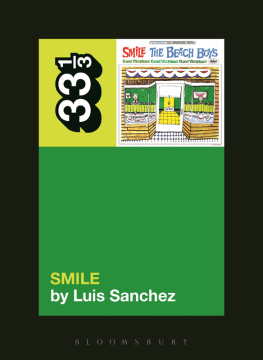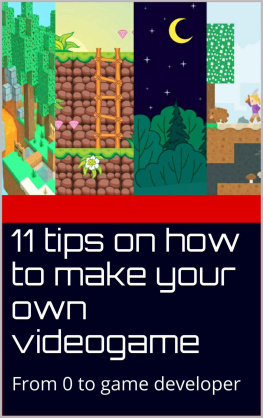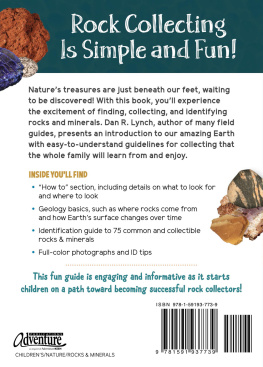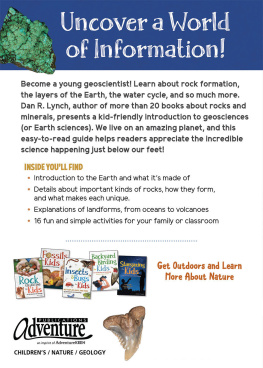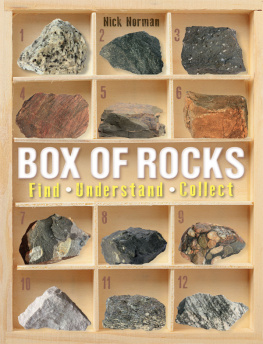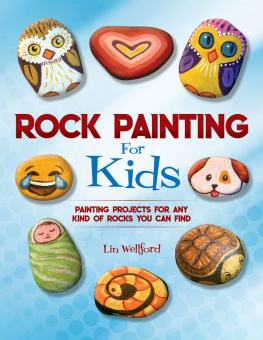If youre looking through the pages of this book, then you probably have a few treasures from the woods, the beach, or the backyard displayed on your bedroom shelves. Perhaps you already think of yourself as a collectorand you probably are one if youre that curious about nature and all its wonders. So, welcome, this book is for you.
Natural history collections often begin with a single object that catches your eye. It might be an interesting rock, a fossil, or an iridescent shell. Perhaps you take it home and try to find out more about it. Or maybe you just keep it on your desk where you can look at it and marvel at the way nature works. Then the next time youre out for a walk you find another exampleonly its different from the first. You begin noticing things: that some of the pebbles you pick up are striped with color and some sparkle in the sun, that you can find a single type of seashell in an amazing range of sizes, that there are many kinds of animal tracks left overnight in the snow.
Once you start noticing those things its hard to stop. Its exciting. It can also be the beginning of an amazing adventure that develops into a passion and a desire to learn more. This book will take you to the next stage of your discovery processknowing what to do with your treasures after you bring them home. Depending on whether youre interested in plants, shells, rocks, or other things you discover, the following chapters will help you learn how to clean, store, and display your specimens.
Well give you tips on how to keep track of your collection by keeping a notebookso that your knowledge of your subject builds on your own discoveries. And well tell you about some interesting people who were young natural history collectors like you.
In the years that Ive worked at the New Mexico Museum of Natural History and Science, Ive had the opportunity to talk to many children who maintain a collection. What I love best about discussing their collections with them is discovering how each one has learned to speak with authority and become an expert on his or her chosen subject. The same will be true for you. As your collection grows, so will your knowledge, your vocabulary, and your confidence.
Michael Sanchez

CURIOUSER AND CURIOUSER
This book promises to teach you how to turn your room into a cabinet of curiosities. Find out why.
Curiosity: from Latin, curiosus, inquisitive
Curator: from Latin, curare, to take care of
Four hundred years ago there were no public museums for families or school groups to visit. But in Europe, people were beginning to get excited about the voyages of discovery being made by explorers. Perhaps even more exciting were the wondrous natural specimens from the plant, mineral, and animal worlds that sailors and scientists brought back from their voyages to distant parts of the globe.
People with an interest in science and learning often set aside a cabinet, or a whole room, in their house for displaying their collection of exotic curiosities. These might be anything from ostrich eggs, hummingbird bones, and shark teeth, to geodes, hairy spiders, and pineapples. People in the 1600s werent necessarily knowledgeable about the things in their collections, but they were interested in learning. Curiosity comes from the Latin word for inquisitive, and thats the start of being a collector and curator.
When they were shared with friends and other collectors, the cabinets of curiosities in peoples homes became the first natural history museums. Well show you how to turn your room into a cabinet of curiosities with projects and suggestions for cataloging, mounting, and displaying your collections.
A COLLECTION NEEDS A CURATOR
At a museum of natural history, a curator is an expert in a chosen subjectrocks, minerals, fossils, plants, shellswhatever his or her interest might be. In a large museum, with many staff members, a curator might have a single focused specialty, and in a small museum, with a small staff, a curator might have several overlapping specialties. If youve ever attended a museums Identification Day, when you can bring in the things youve found and have your questions answered, then youve already met a curator or two.
A collection can begin with someone being curious about one thing and then grow in all directions. Each area of natural history is huge, whether you are interested in bugs, rocks, shells, plants, or fossils. Scientist at work, entomologist studying beetle specimens at the Natural History Museum, London, UK. Bridgeman Images. NHM1454919
The owner of these curiosities was so proud of his collection that he had an artist paint a picture of it. Along with corals and insects, the collection includes mirrors and scientific instruments, which were also rare in the 1600s.Cabinet of Curiosities (with glass doors), by Andrea Dominico Remps (16211699). / De Agostini Picture Library / G. Nimatallah / Bridgeman Images DGA511189
Curators careers might start with a curiosity about nature when theyre children, and, like you, an interest in collecting things and learning more about them. In high school, they discover a deeper interest when they take science classes. And then in college, theyll specialize in a subject area such as geology (rocks and minerals), botany (plants), zoology (animals), marine biology (sea life), entomology (insects), or paleontology (fossils) to develop their expertise. There are also many experts who become good at what they do simply because they have a passion for learning about their subject: There is a world authority on a particular type of beetle at our museum of natural history. But he didnt train to be an entomologisthes a retired chemist!
Becoming an expert doesnt really ever stop. One of the exciting things about being a curator is that you keep looking and learning every day. Sometimes that may involve field research, such as hunting for dinosaur bones in the Gobi desert or studying rare plants in the Brazilian rain forest. Sometimes it involves identification of species and understanding the differences between them, such as discovering the differences and similarities among the hundreds of types of ants in the world. Sometimes it involves taking care of rare or one-of-a-kind specimens and knowing how to protect them and how to display them.



